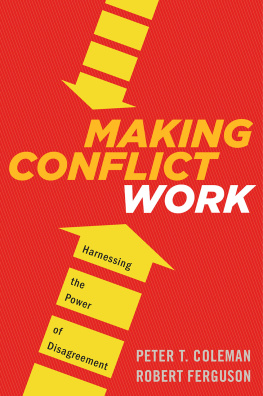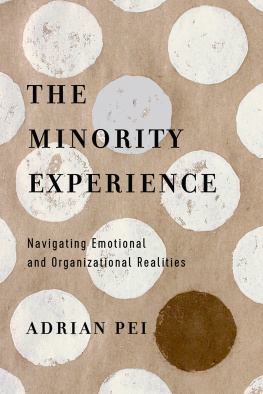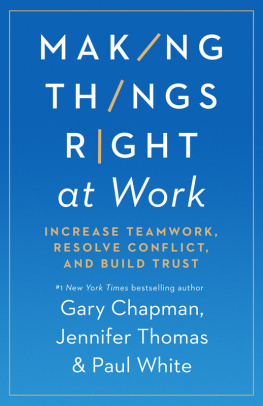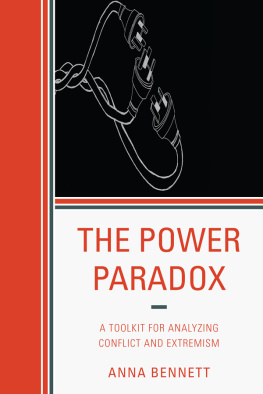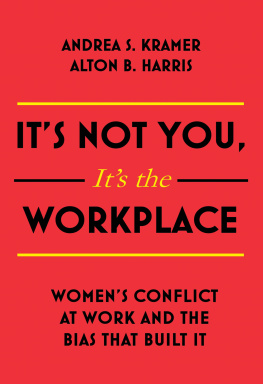Coleman Peter T - Making Conflict Work: Navigating Disagreement Up and Down Your Organization
Here you can read online Coleman Peter T - Making Conflict Work: Navigating Disagreement Up and Down Your Organization full text of the book (entire story) in english for free. Download pdf and epub, get meaning, cover and reviews about this ebook. publisher: Houghton Mifflin Harcourt, genre: Politics. Description of the work, (preface) as well as reviews are available. Best literature library LitArk.com created for fans of good reading and offers a wide selection of genres:
Romance novel
Science fiction
Adventure
Detective
Science
History
Home and family
Prose
Art
Politics
Computer
Non-fiction
Religion
Business
Children
Humor
Choose a favorite category and find really read worthwhile books. Enjoy immersion in the world of imagination, feel the emotions of the characters or learn something new for yourself, make an fascinating discovery.
- Book:Making Conflict Work: Navigating Disagreement Up and Down Your Organization
- Author:
- Publisher:Houghton Mifflin Harcourt
- Genre:
- Rating:4 / 5
- Favourites:Add to favourites
- Your mark:
- 80
- 1
- 2
- 3
- 4
- 5
Making Conflict Work: Navigating Disagreement Up and Down Your Organization: summary, description and annotation
We offer to read an annotation, description, summary or preface (depends on what the author of the book "Making Conflict Work: Navigating Disagreement Up and Down Your Organization" wrote himself). If you haven't found the necessary information about the book — write in the comments, we will try to find it.
A provocative guide to navigating conflict in the workplace by assessing power dynamics and adapting your tactics accordingly.
Coleman Peter T: author's other books
Who wrote Making Conflict Work: Navigating Disagreement Up and Down Your Organization? Find out the surname, the name of the author of the book and a list of all author's works by series.
Making Conflict Work: Navigating Disagreement Up and Down Your Organization — read online for free the complete book (whole text) full work
Below is the text of the book, divided by pages. System saving the place of the last page read, allows you to conveniently read the book "Making Conflict Work: Navigating Disagreement Up and Down Your Organization" online for free, without having to search again every time where you left off. Put a bookmark, and you can go to the page where you finished reading at any time.
Font size:
Interval:
Bookmark:
Copyright 2014 by Peter T. Coleman and Robert Ferguson
All rights reserved.
For information about permission to reproduce selections from this book, write to Permissions, Houghton Mifflin Harcourt Publishing Company, 215 Park Avenue South, New York, New York 10003.
www.hmhco.com
The Library of Congress has cataloged the print edition as follows:
Coleman, Peter T., date.
Making conflict work : harnessing the power of disagreement / Peter T. Coleman and Robert Ferguson.
pages cm
ISBN 978-0-544-14839-0 (hardback)
1. Conflict management. 2. Interpersonal relations. 3. Interpersonal conflict. 4. Organizational behavior. I. Ferguson, Robert, date. II. Title.
HD 42. C 6424 2014
658.4'053dc 232014011691
e ISBN 978-0-544-14914-4
v1.0914
HOW WELL DO you manage conflict with your boss or other superiors at work, or with the more difficult employees you need to supervise?
Belligerent bosses, petulant employees, demanding and disrespectful clients, former peers you now supervise, psychopathological CEOs. No matter how old you are, how long you have been in the work world, how many conflict-management trainings you have attended (or slept through), or how many best-selling books on difficult conversations you have read, problems with characters like theseup and down the food chain at workare exhausting and can feel impossible. What can you do when your boss holds all the cards and enjoys being a jerk? Or when an employee you really depend on is constantly whining and being difficult? Or when vitally important clients insist on being demeaning?
When Sam heard that the reorganization of his company had him reporting to a woman thirty years younger than him, he went quietly to his office and stewed. He liked and respected Isabella; the sting he felt was not personal. But he had come up through the ranks of manufacturing in the eighties and nineties and had the battle scars to prove it. Now hed be taking orders from someone a few years out of an MBA program. He tried to avoid contact with her and quickly acquiesced to her at the first hint of a difference of opinion. It made their working relationship excruciating for both of them.
Tammy responded differently. When her friend Susan became her supervisor at the nongovernmental organization they worked for, Tammy mumbled, Shes one of them now. Tammy believed that all people in positions of power grew to like it and abuse it. Although her former friend tried repeatedly to collaborate with her, Tammy treated her as a defector. Eventually Susan had to fire Tammy for a series of disciplinary problems and insubordination. Tammy pushed Susan to be confrontational and punitive and so confirmed her own bias about those in power.
Like many executives, Carlos, the new CEO of a $300 million textile firm, knew that his companys move toward global business required them to transform their transfer-pricing model, a method of profit allocation that helped to minimize their tax burden. The current system for setting transfer prices often benefited individual manufacturing sites but in effect punished the company for overseas sales. Carlos had to initiate a major change in transfer pricing, which would likely encounter stiff resistance.
Carlos started by asking Tony, his chief financial officer, to design a transfer-pricing model and suggested he get input from others. Tony was extremely bright and knowledgeable; he quickly developed a very good model. But he did it by himself. Feeling the urgency of the situation, Tony rolled out the new pricing model to the company. It was soon mired in conflict, as managers throughout the organization haggled over details. There was more resistance than expectedmuch more. Carlos had asked Tony to use a more participatory process for the development of the model but had not insisted.
We ended up having to start over because my leadership had been weak, Carlos reflected. Tony and I had been equals for years. Hes got a sharp mind and a strong will. It had never been within my power to give him orders. But this time I should have directed him. I should have insisted he act more collaboratively on this initiative. Instead I watched Tony roll out a model created in a one-man vacuum. It was a great model, but I knew the process was wrong and I didnt follow my instincts.
When Richard took over as division head of a large communications technology company, his direct reports (and their reports) soon learned that stifling ideas might hurt innovation and problem solving, but sharing ideas could lead to career extinction.
Ernie, a quiet but thoughtful young accountant, got the point quickly. Richard invited him to participate in a diagonal slice group. Specifically designed as a forum for top leadership to listen to employees from various functions at all levels of the organization, it was advertised as an open, nonthreatening environment where an administrative assistants opinion carried as much value as a chief engineers. When Ernie asked an innocent question about budgeting during one of the groups early meetings, Richard interjected with Let me tell you why thats a stupid question. Ernie decided then and there never to question Richard again.
A pattern of such comments from Richard eventually led to fewer and fewer questions being raisedand no disagreement. From anyone. After a few months, his arrogant behavior had eliminated all candid, constructive feedback, but he concluded that he was doing such a great job leading and communicating that he had achieved near total alignment within the division. This delusion lasted until new ideas and products dried up and sales followed.
This is a book about conflict, power, and change. It chronicles the challenges and opportunities we face when we find ourselves in conflict with those in authoritybosses, executives, regulators, police officers, professors, and parents, to name a fewand with those we have authority over. It also addresses what to do in those precarious situations in which power shifts occur and we face new conflicts with former peers we now supervise, or with former supervisees who have now become the boss.
Conflict is a lot like fire. When it sparks, it can intensify, spread, and lead to pain, loss, and irreparable damage. It can distract, distance, derail, and occasionally destroy opportunities and relationships. It makes most people anxious, and as a result it is often mishandled and made worse. It can waste time and lessen productivity, impair teamwork and morale, increase counterproductive behaviors like stealing and sabotage, and poison the physical and mental health of employees. So conflict can burn.
Power is often likened to energy, which physicists define as the capacity to do workto get things done. But for all our efforts to acquire power, both having it and not having it are riddled with traps, constraints, consequences, and misunderstandings. Having power and authority in relationships often comes with high expectations, demands, duties, and responsibilities that can be surprisingly constricting. Ask any new parent or president or CEO. And not having it is much worse.
When conflict and power mix, the results can be explosive.
Unfortunately, conflict and power tend to travel together. When people find themselves in conflict, they immediatelyalmost automaticallybecome aware of the balance of power in the situation or relationship: Hey, you work for me, so back off! Or: Wow, he is much bigger and drunker than I thought he was before I told him to shut up. Bad idea. Or: If you say one more insulting word to me, I will rally my fleet of attorneys to devote the rest of their careers to making you wish you had never met me. Conflict puts power differences into focus.
Similarly, power shifts and disparities in power often create conflict. Class conflicts, race conflicts, gender conflicts, generational conflictsjust about any intergroup conflict is essentially about power. When disadvantaged minority groups organize to demand their rights, its about power. When unions strike, its about power. At work, when people are demoted in rank, it creates conflict. Promotions too tend to stir envy and resentment, which often show up as conflict sooner or later.
Next pageFont size:
Interval:
Bookmark:
Similar books «Making Conflict Work: Navigating Disagreement Up and Down Your Organization»
Look at similar books to Making Conflict Work: Navigating Disagreement Up and Down Your Organization. We have selected literature similar in name and meaning in the hope of providing readers with more options to find new, interesting, not yet read works.
Discussion, reviews of the book Making Conflict Work: Navigating Disagreement Up and Down Your Organization and just readers' own opinions. Leave your comments, write what you think about the work, its meaning or the main characters. Specify what exactly you liked and what you didn't like, and why you think so.

